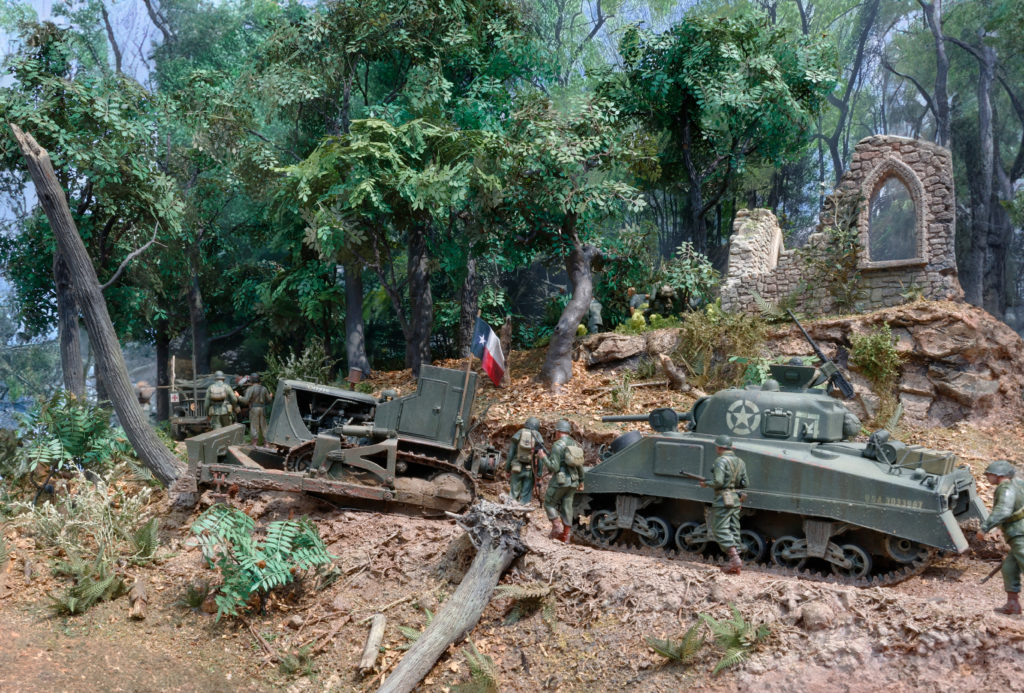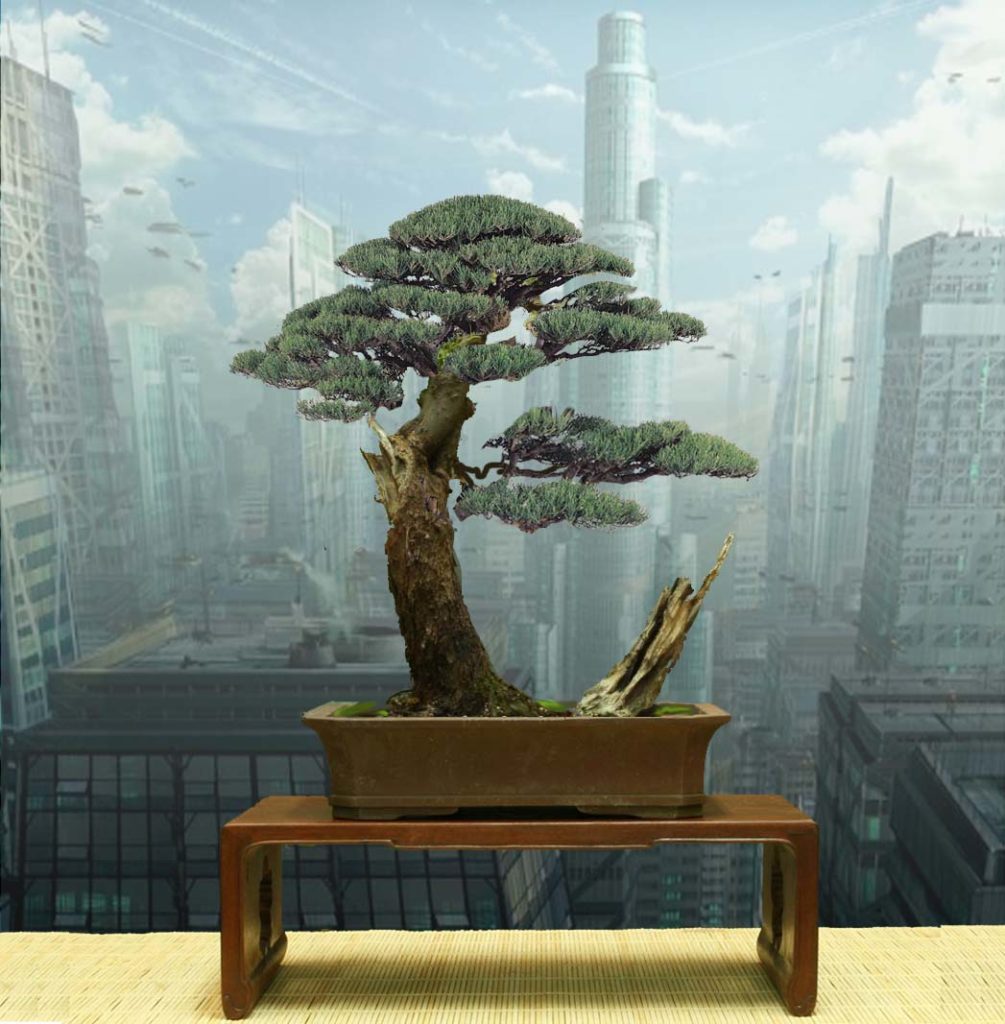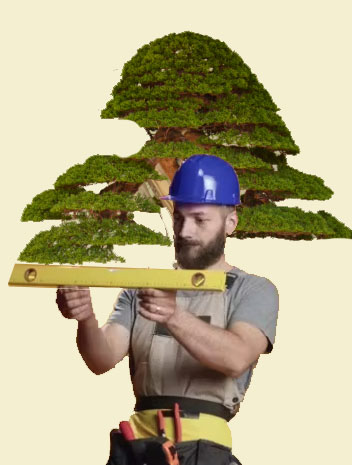Natural Bonsai?

NATURAL BONSAI?
There is nothing natural about bonsai.
Recently I was working on a large diorama with my brother that needed several 1/35-scale trees. Small bonsai trees would be perfect for that I thought. Well I took the carcass of a small dead twisted and gnarly Australian pine bonsai tree and glued over 1,600 punched out paper leaves. When I was done I sent a photo to my brother and he said – “That doesn’t look like a tree. We needed models that look like trees.” The bonsai was too phantasmagorical. Or perhaps another way to say it was the bonsai looked too manipulated. My brother’s assessment of the bonsai was akin to the child who told the emperor he had no clothes.

Webster’s definition of natural is “existing in or caused by nature; not made or casued by humankind.” By definition then putting a tree in pot is not natural. But most bonsai artists don’t stop there. We use wire, pruning, carving, pinching and other human techniques to shape and dwarf the trees. The whole organism has been altered by human intention. Therefore by the definition a bonsai is not natural.
While trees in the wild have nearly infinite variety and somewhere out there one could probably have found a tree that looked something like my 1/35 scale model tree, the fact that a tree exists that looks like the one I made still does not make it natural. Natural would mean no human intervention.
Therefore the goal of bonsai is not be natural but to use the techniques to create dwarfed trees that evoke some sort of emotional response from the viewer. That implies the artist have a design goal when making a tree, and then working on that goal to “style” the tree. To achieve that goal bonsai artist developed rules. John Naka’s first book “Bonsai Techniques” described a variety of branch configurations that commonly appear in nature, such as bar branches, comb branches, elbow branches and others, but are to be avoided when styling a tree. He offered a bunch of bonsai rules. Note the term “style” a tree” means the bonsai is not natural.

Design goals can reflect nearly any idea. The most common is to make a tree look old, another is to position the branches to emphasize flowers, and other is to use selective compression to distill the essence of a “real tree” in a pot. Other less common design goals are to make a tree look like a sea monster, to capture the essence of a work of literature in a tree design, or to envision and devise a tree growing on a distant planet. The list of ideas never ends; it depends solely on one’s imagination.
Many of the most common design goals is to make an abstract looking tree that captures the look of a tree in real life. John Naka’s second book “Bonsai Techniques II” focused many pages on this. He showed photos of actual trees and then made a drawing of how a bonsai design could replicate that image. An interesting point is some of these drawings break some of the rules John described in his first book. Many aficionados of bald cypress trees follow Vaughn Banting’s categorization and aim to reproduce in miniature several of the variations of bald cypress growing in the wild. Note in the first sentence I said “abstract” as none of these styled bonsai trees are natural even though they try to replicate a real tree.


When styling a tree, humans can sometimes take the techniques to extreme levels. One example is the design of a bonsai with perfectly flat bottoms to foliage pads. One could put a straight edge on these pad bottoms. This stylistics feature is typical human response to take an idea to its limit. The best analog to a perfectly flat bottom foliage pad is a poodle dog with the pompom cut hair. Neither are natural.
One can’t discuss whether bonsai are natural without mentioning the “naturalistic” style promulgated by some artists but especially Walter Pall. This design goal is probably on the exact opposite of the spectrum from the poodle cut flat pads. In this case, the naturalistic style strives to shape the branches to look like a human was not involved at all in the process. The result are bonsai that look like some trees in the wild with somewhat of an unkempt appearance and breaking many of the “rules.” But by definition they are still not natural.

My advice is to keep on learning and experimenting and don’t worry so much about being natural, with bonsai that is. Until next month.
